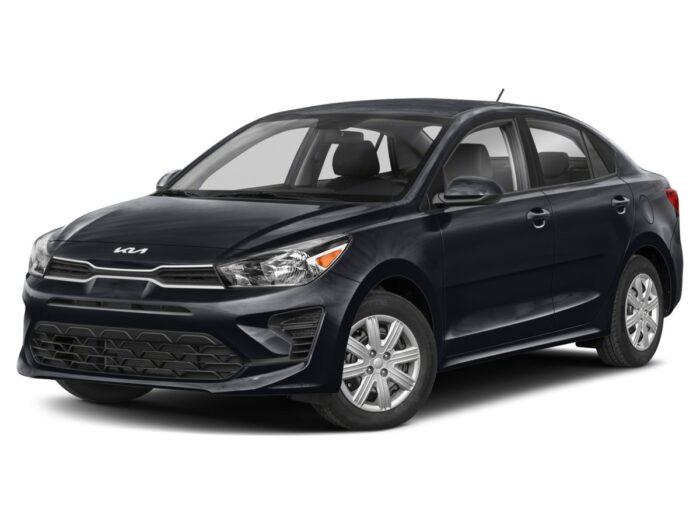Whether you’re a current Kia Rio owner or you’re considering purchasing one, understanding the different generations, trims, and engines can be crucial. Moreover, ensuring the optimal tire pressure for your vehicle is vital for both safety and performance. In this comprehensive guide, we’ll delve into everything you need to know about the Kia Rio, including the recommended tire pressures and how to reset that pesky low tire pressure light!
Why Tire Pressure Matters
Before we get to the numbers, it’s essential to understand the importance of correct tire pressure:
- Safety: Properly inflated tires ensure optimal vehicle handling, reducing the risk of accidents.
- Fuel Efficiency: Adequate tire pressure can improve your gas mileage by up to 3%.
- Tire Lifespan: An appropriately inflated tire wears evenly, thereby prolonging its life.
- Environmental Impact: Better gas mileage equals fewer emissions
Kia Rio Generations and their Overview
Kia Rio, the subcompact car that’s been around since the early 2000s, has undergone various changes, enhancing its aesthetics, performance, and safety features. Here’s a brief overview of its evolution:
- First Generation (2000-2005): The origin, featuring basic amenities and a straightforward design.
- Second Generation (2005-2011): Introduction of more modern aesthetics and advanced safety features.
- Third Generation (2011-2017): Sleeker design, enhanced performance, and tech integrations.
- Fourth Generation (2017-present): State-of-the-art tech features, elegant interiors, and turbocharged engine options.

Different Trims & Engine Types
The Kia Rio, over the years, has been offered in various trims to cater to a wider audience. Here’s a table highlighting the prominent trims and their respective engines:
| Generation | Trim Levels | Engine Types |
|---|---|---|
| First | LX, SX | 1.5L I4, 1.6L I4 |
| Second | Base, LX, SX | 1.4L I4, 1.6L I4 |
| Third | LX, EX, SX | 1.2L I4, 1.4L I4, 1.6L I4 |
| Fourth | LX, S, EX | 1.0L Turbo I3, 1.2L I4, 1.6L I4 |
Recommended Tire Pressure: By Generations & Trims
Maintaining the recommended tire pressure can improve your car’s fuel efficiency, reduce tire wear, and improve vehicle safety. The tire pressure can vary based on the car’s generation and trim. Here’s a table to guide you:
| Generation & Trim | Front Tire (PSI) | Rear Tire (PSI) |
|---|---|---|
| First Gen (All trims) | 32 | 30 |
| Second Gen (All trims) | 33 | 31 |
| Third Gen (LX, EX) | 33 | 33 |
| Third Gen (SX) | 34 | 34 |
| Fourth Gen (LX, S) | 33 | 32 |
| Fourth Gen (EX) | 34 | 33 |
It’s essential to check the tire pressure at least once a month and before long trips.
Kia Rio Tire Pressure Recommendations (PSI) by Year
| Year | Summer Tires (PSI) | Winter Tires (PSI) |
|---|---|---|
| 2024 | 32 | 34 |
| 2023 | 32 | 34 |
| 2022 | 32 | 34 |
| 2021 | 32 | 34 |
| 2020 | 32 | 34 |
| 2019 | 31 | 33 |
| 2018 | 31 | 33 |
| 2017 | 31 | 33 |
| 2016 | 31 | 33 |
| 2015 | 30 | 32 |
| 2014 | 30 | 32 |
| 2013 | 30 | 32 |
| 2012 | 29 | 31 |
| 2011 | 29 | 31 |
| 2010 | 29 | 31 |
| 2009 | 28 | 30 |
| 2008 | 28 | 30 |
| 2007 | 28 | 30 |
| 2006 | 27 | 29 |
| 2005 | 27 | 29 |
| 2004 | 27 | 29 |
| 2003 | 26 | 28 |
| 2002 | 26 | 28 |
| 2001 | 26 | 28 |
The figures in the table are for illustrative purposes and might not reflect the actual recommended tire pressures. It’s essential to consult your vehicle’s manual or the tire manufacturer for the most accurate recommendations.
How to Reset Low Tire Pressure Light
You’ve filled your tires to the perfect pressure, but that low tire pressure light is still on? Here’s how to reset it:
- Turn on the ignition: But don’t start the engine.
- Locate the reset button: Often found under the steering wheel.
- Press and hold: Hold down the button until the tire pressure light blinks thrice.
- Wait: Turn off the ignition and wait for a few moments.
- Restart: Start the engine; the light should be off now.
Reminder: If the light doesn’t go off or comes back on shortly after, it may indicate a more significant issue. Consider seeking professional assistance.
Tire Pressure: Beyond the Basics
While the above information provides a quick snapshot of tire pressure recommendations for the Kia Rio, it’s essential to understand some broader contexts and practices around tire maintenance and care.
Factors Influencing Tire Pressure
Even with the manufacturer’s recommendation in hand, you might find that real-world driving conditions necessitate slight adjustments. Here are a few factors that might influence tire pressure:
- Altitude: Driving at high altitudes can impact tire pressure. Generally, tire pressure decreases as altitude increases.
- Load: Heavily loaded vehicles might require higher tire pressure.
- High-Speed Driving: Vehicles driven consistently at high speeds might benefit from a slightly higher tire pressure for optimal performance.
Symptoms of Incorrect Tire Pressure
Always be alert for signs of over-inflated or under-inflated tires:
- Over-Inflated Tires:
- Center tread wears out faster than the edges.
- Provides a harder ride.
- Risk of a blowout increases.
- Under-Inflated Tires:
- Edges of the tread wear out faster than the center.
- Decreased fuel efficiency.
- Reduced handling capabilities.
Seasonal Adjustments: Summer vs. Winter
Understanding seasonal variations can help you maintain optimal tire pressure year-round.
- Summer: Tires tend to retain their pressure due to warmer temperatures. However, longer trips and hotter roads can cause tires to overheat, especially if they’re under-inflated. Regular checks are essential.
- Winter: Cold temperatures can cause tire pressure to drop. It’s crucial to check the pressure more frequently during winter months, especially before embarking on long journeys.
FAQ
Navigating the world of tire pressure can be confusing, especially with seasonal changes and differing models. Here are some frequently asked questions to help you maintain the optimal tire health for your Kia Rio.
1. Why is the correct tire pressure important for my Kia Rio?
Maintaining the correct tire pressure ensures optimal vehicle handling, maximizes fuel efficiency, and extends the lifespan of your tires. Additionally, it significantly reduces the risk of tire-related accidents.
2. How often should I check the tire pressure?
It’s advisable to check your tire pressure at least once a month and before long trips. Remember, tire pressure can fluctuate based on external temperatures and other factors.
3. Can I use the same tire pressure for both summer and winter tires?
No. Typically, winter tires may require slightly higher pressure than summer tires due to temperature fluctuations and the tire’s specific design. Always refer to the manufacturer’s recommendations.
4. How do altitude and load affect tire pressure?
At higher altitudes, atmospheric pressure drops, which may influence the tire pressure. Furthermore, a heavily loaded vehicle might require a slight increase in tire pressure to support the added weight.
5. I noticed uneven wear on my tires. Is this related to tire pressure?
Yes, uneven wear can be a result of improperly inflated tires. Over-inflation often results in quicker wear in the center, while under-inflation can cause faster wear on the edges.
6. Are the PSI values the same for all tire brands?
While the recommended PSI values are specific to the Kia Rio model, there might be slight variations depending on the tire brand and model. It’s always best to consult the tire manufacturer or your vehicle’s user manual.
7. What should I do if the tire pressure warning light illuminates on the dashboard?
If the tire pressure warning light comes on, it’s essential to check the pressure in all tires as soon as possible. It might indicate under-inflation, which can be hazardous if not addressed promptly.
8. Can I use a regular air pump to inflate my Kia Rio tires?
Yes, but it’s crucial to ensure you’re inflating to the correct PSI. Investing in a good quality tire pressure gauge can help you accurately measure and maintain the right pressure.
